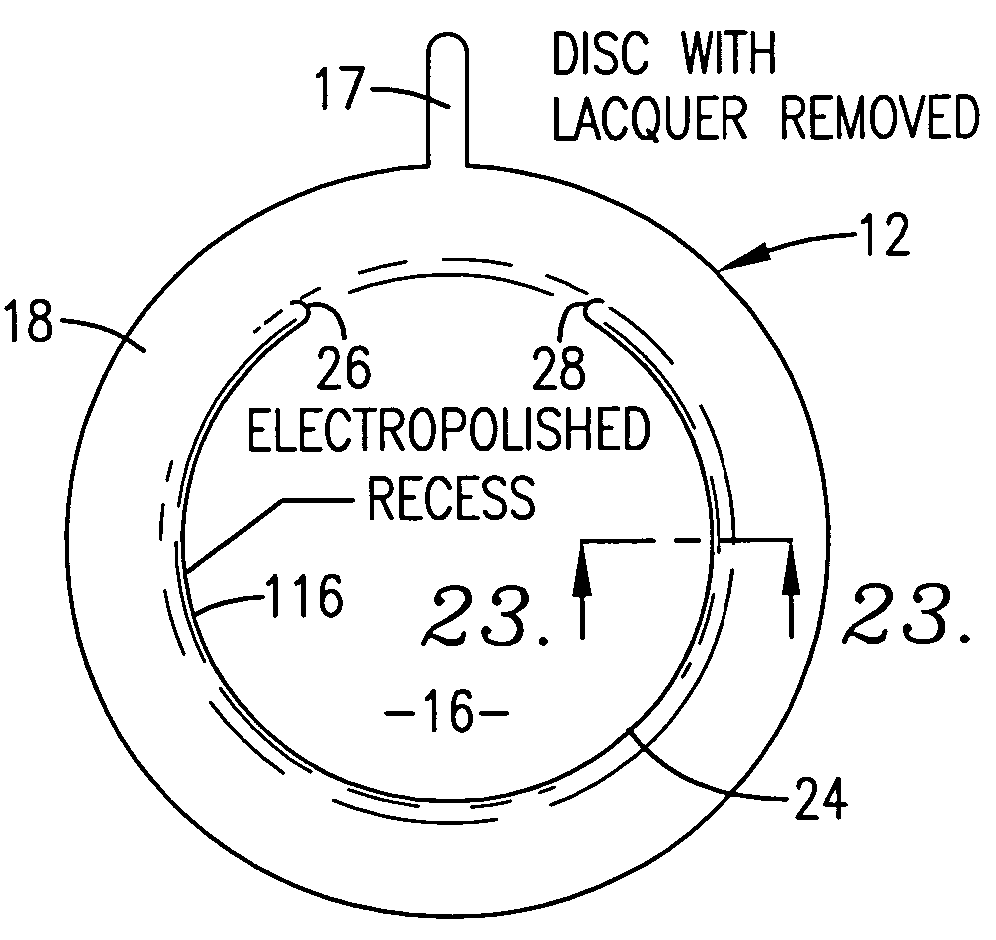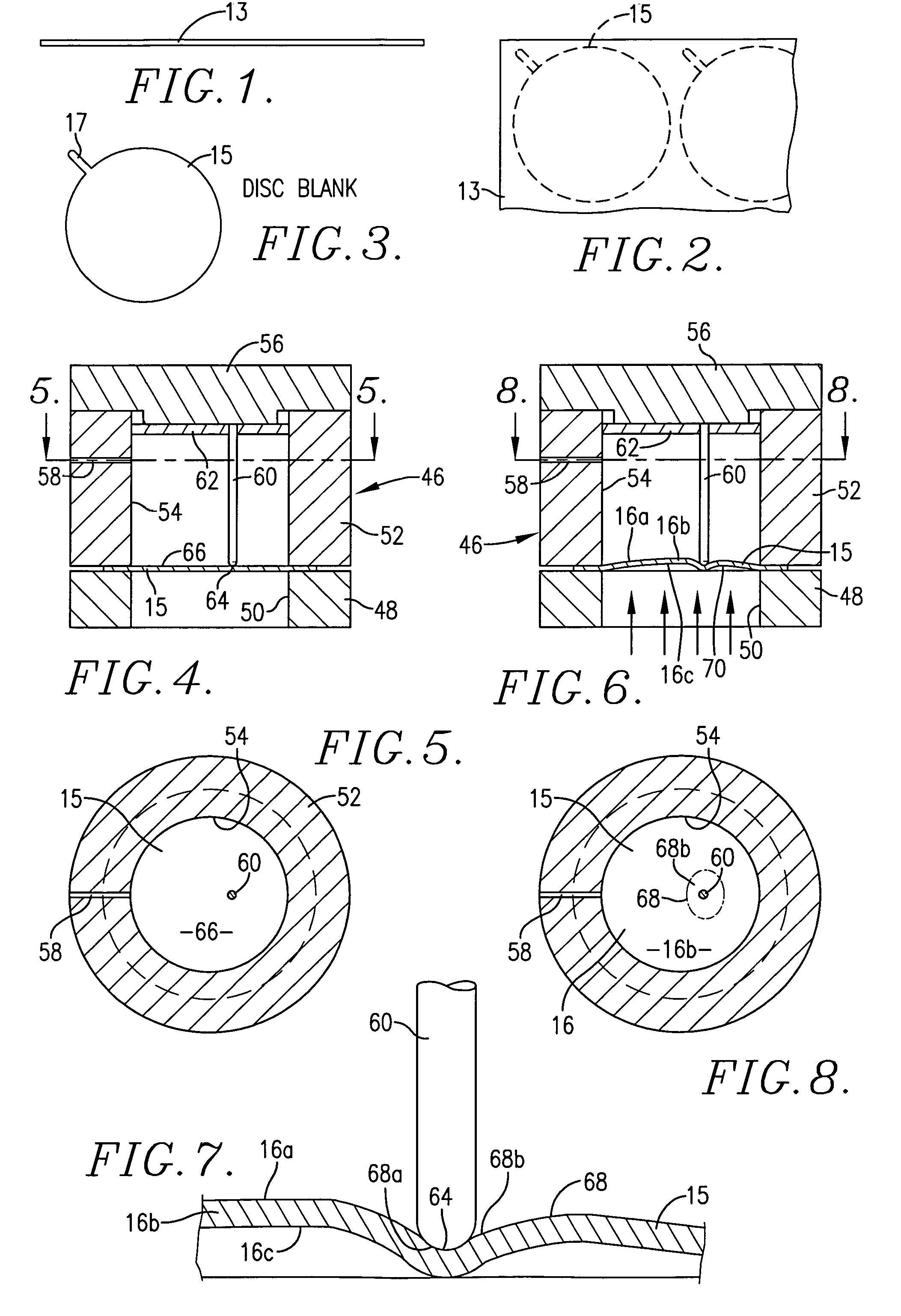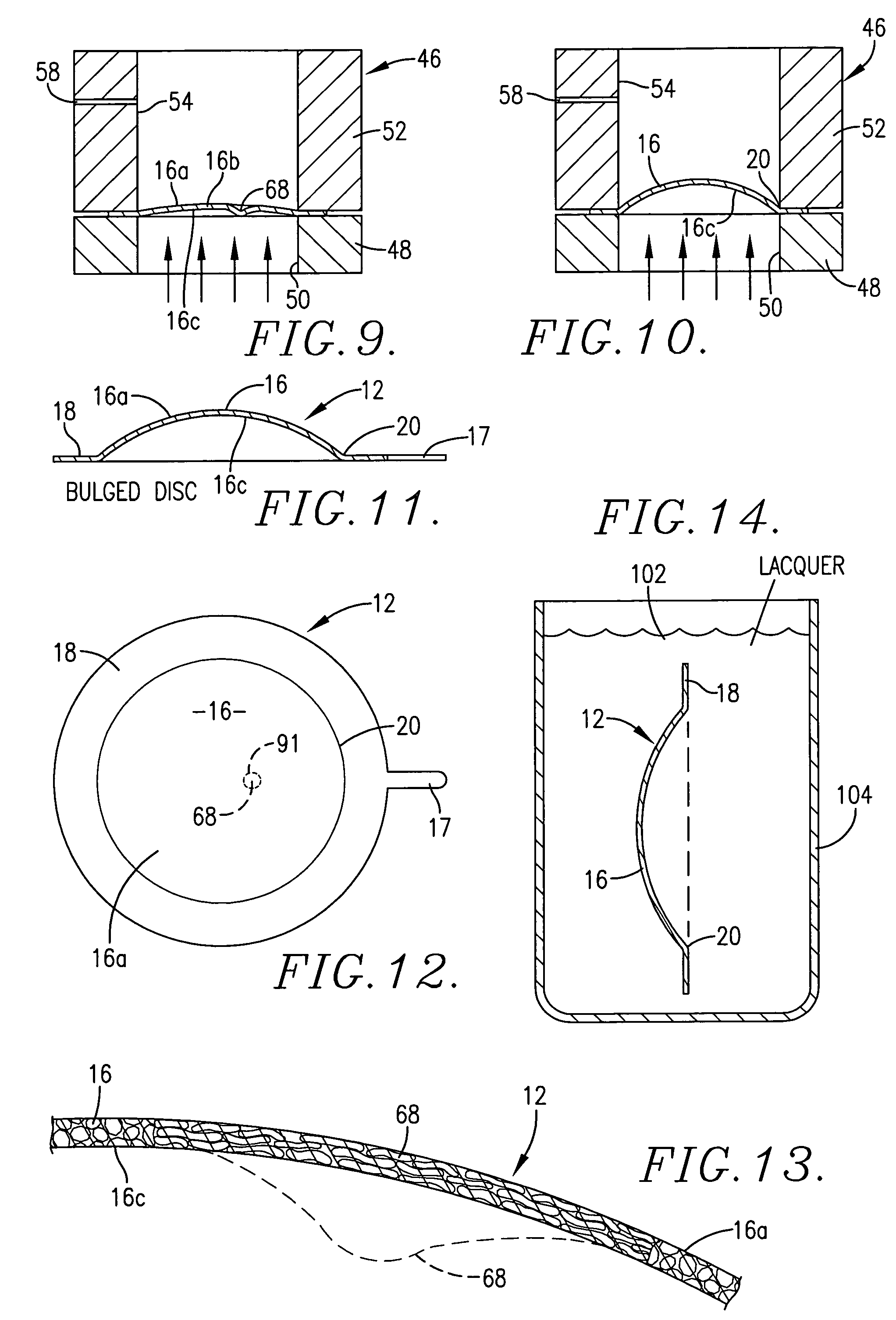Reverse acting rupture disc with laser-defined electropolished line of weakness and method of forming the line of weakness
a technology of laser-defined electropolishing and reverse-acting discs, which is applied in the direction of functional valve types, manufacturing tools, transportation and packaging, etc., can solve the problems of limiting service life, increasing the brittleness of metal, and creating stress zones, so as to achieve a constant pre-bulge height of the dome and high dome height
- Summary
- Abstract
- Description
- Claims
- Application Information
AI Technical Summary
Benefits of technology
Problems solved by technology
Method used
Image
Examples
example 1
[0086]An exemplary disc 12 prepared in accordance with the preferred process of this invention and depicted in FIG. 10 is preferably fabricated from 2 mil 316 stainless steel and has an overall diameter of about 2.5 inches. Pre-bulging of the disc 12 as schematically illustrated in FIG. 6 is accomplished under a pressure of about 50 psig to form a depression 68 in the disc blank 44 as shown in FIG. 6. Final bulging of the disc as schematically shown in FIGS. 9 and 10 is carried out under a pressure of about 200 psig producing a bulged disc in which the height of the dome is about 0.34 inch. The final bulged disc is then subject to heat treatment at a temperature of about 600° F. for 10 minutes to further relieve any residual stresses in the disc. The outer boundary 91 (FIG. 12) of the metal segment region 68 of the bulged section of the disc, which has been subjected to greater stress than the remaining metal of the bulged section 16 has a nominal area of about 0.4 square inch. The ...
example 2
[0106]In the graphical representation of FIG. 35, the results of pressure tests conducted on eight two-inch diameter stainless steel discs each 0.002 in. thick are plotted on the basis of burst / reversal pressure on the Y axis and percent of pre-bulge pressure on the X axis. Four of the discs had an electropolished recess while the other four discs did not have an electropolished recess and therefore the surface was smooth. The discs were all made using a final bulge pressure of 200 psi as set forth in Example 1. The percentages of pre-bulge pressure on the X axis of the graph in FIG. 35 are expressed as a percentage of the 200 psi final bulge pressure.
[0107]These pressure tests demonstrated that samples without an electropolished recess, when pre-bulged at pressures ranging from 10% to 25%, reversed within a range of 10 psi to 50 psi, depending upon the pre-bulge pressure. Unexpectedly, the samples having electropolished recess reversed and burst at essentially the same pressures as...
PUM
| Property | Measurement | Unit |
|---|---|---|
| pressure | aaaaa | aaaaa |
| diameter | aaaaa | aaaaa |
| diameter | aaaaa | aaaaa |
Abstract
Description
Claims
Application Information
 Login to View More
Login to View More - R&D
- Intellectual Property
- Life Sciences
- Materials
- Tech Scout
- Unparalleled Data Quality
- Higher Quality Content
- 60% Fewer Hallucinations
Browse by: Latest US Patents, China's latest patents, Technical Efficacy Thesaurus, Application Domain, Technology Topic, Popular Technical Reports.
© 2025 PatSnap. All rights reserved.Legal|Privacy policy|Modern Slavery Act Transparency Statement|Sitemap|About US| Contact US: help@patsnap.com



